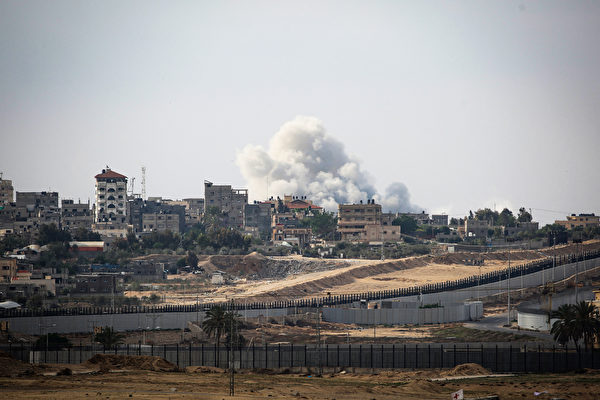Israeli forces and tanks entered the crowded northern part of the Gaza Strip on Saturday (May 18), killing and injuring dozens of Palestinians, according to local medical personnel and residents reported by Reuters.
During the seven-month-long conflict, Israeli forces have repeatedly surrounded these areas.
This month, Israel once again conducted military sweeps in these areas in northern Gaza. Previously, in January, the Israeli military had announced the end of major operations and anticipated that its forces would return to Gaza to prevent Hamas, the Palestinian Islamic organization ruling Gaza, from regrouping.
One of the locations targeted in this military sweep was Jabalia, the largest of the eight long-established refugee camps in Gaza. Residents reported that on Saturday, Israeli forces and tanks entered streets that had not seen a ground assault launched before.
Medical personnel said that in one attack, 15 Palestinians were killed, and dozens were injured.
The Gaza Health Ministry controlled by Hamas and the Civil Defense said that they received dozens of calls reporting possible casualties, but due to ongoing ground attacks and airstrikes, they were unable to conduct any search operations.
A resident of Jabalia, Ibrahim Khaled, communicated through messaging apps, saying, “Today is the most difficult day, the airstrikes and tank shelling by the occupying forces have hardly stopped.” He told Reuters, “We know that dozens of people have been killed and injured, but no ambulance can enter the area.”
The Israeli military stated that they will continue conducting “precision strikes against terrorists and infrastructure” throughout Gaza.
In a statement, the Israeli military said, “The Israeli Air Force (IAF) continued operations in the Gaza Strip, hitting over 70 terror targets in the past day, including weapon storage facilities, military infrastructure sites, and terrorists posing threats to the Israeli Defense Forces as well as military compounds.”
Israeli forces occupy Rafah
Furthermore, Israeli forces have also occupied some areas in the southern Gaza city of Rafah near the Egyptian border, where displaced people have crowded. Israel targeted this city earlier this month in a long-awaited invasion to clear out stubborn elements of Hamas, the Palestinian Islamic militant organization.
Israeli tanks entered some suburbs in eastern Rafah, engaging in clashes with Hamas armed militants. Local residents reported that Israeli airstrikes and ground bombardment continued until early Saturday.
Rafah has been sheltering over a million displaced Gazans. The main Palestinian aid agency of the United Nations, the United Nations Relief Works Agency, stated on Saturday that nearly 800,000 Palestinians have fled the city since Israel launched ground operations on May 6.
Israel argues that taking control of Rafah is necessary to dismantle Hamas and ensure Israeli national security.
Center party threatens to withdraw from coalition
Meanwhile, Benny Gantz, a member of the center party in Prime Minister Benjamin Netanyahu’s government, threatened to resign if right-wing leaders do not agree on a post-war plan by June 8, detailing how to govern Gaza after the end of the war with Hamas. This further exposes the cracks within Netanyahu’s government.
The divisions within the Israeli alliance have been longstanding, with Prime Minister Netanyahu facing criticism at home and internationally for failing to clarify the ultimate goals of the war against Hamas after over seven months of conflict.
Gantz stated in a press conference that he expects a six-point plan to be developed by the war cabinet within the next three weeks. If his expectations are not met, he will have his center party withdraw from Netanyahu’s emergency alliance.
Gantz proposed establishing an interim civil administration system in Gaza involving the United States, Europe, and Arab Palestinians, with Israel continuing to be responsible for security control.
Despite Gantz being Netanyahu’s strongest opponent in public opinion polls, his departure from the government alone is not enough to bring down the government as the remaining parties provide enough parliamentary majority to support Prime Minister Netanyahu.
However, Gantz’s challenge indicates increased pressure faced by the Israeli alliance led by the far-right party. Defense Minister Yoav Gallant also called on Netanyahu to clarify post-war plans and relinquish any military reoccupation of Gaza.
Conflict with Hamas continues
Armed branches of Hamas, Islamic Jihad, and Fatah claimed that their fighters targeted Israeli troops with anti-tank rockets, mortar shells, and explosive devices buried on some roads, resulting in casualties among Israeli soldiers in Jabalia and Rafah.
The Israeli military reported that since the initial ground invasion of Gaza on October 20, 281 Israeli soldiers have died in combat.
The Gaza Health Ministry stated that at least 35,386 Palestinians have died in Israeli attacks since October 7. Aid agencies have repeatedly warned of widespread starvation, severe shortages of fuel, and medical supplies.
According to Israeli statistics, 1,200 Israelis died in Hamas cross-border attacks on October 7. Approximately 125 individuals are believed to remain held captive in Gaza.
Israeli media reported that based on intelligence gathered in recent military operations, the military announced the recovery of the body of a man named Ron Binyamin, one of the over 250 hostages kidnapped by Hamas in the cross-border incident on October 7. The military reported that Binyamin’s body was found along with the bodies of three others and announced that their remains would be repatriated on Friday.
(This article referenced reports from Reuters)

